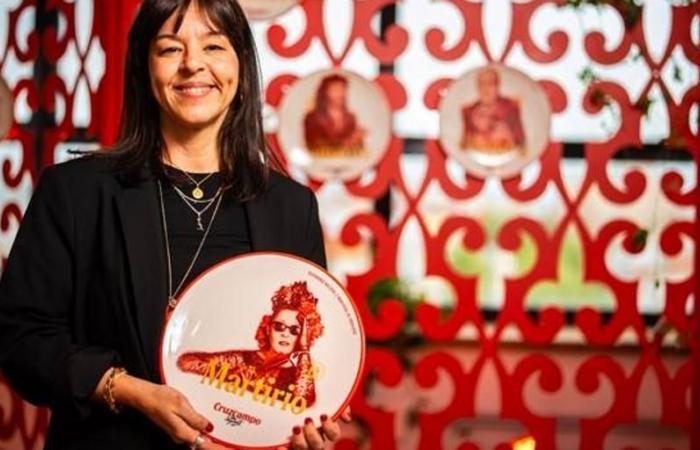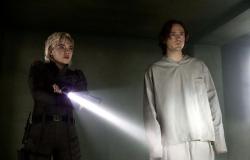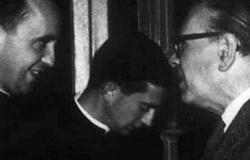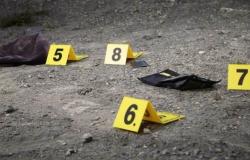In the middle of the pandemic, an endearing mural on Sol de Sevilla street of a grandmother cradling a bottle of Cruzcampo returned us the illusion for those simple moments that make us greatly happy. Now, its author’s work, Ana Legelelda Sevillian artist … With a long career, pioneer in the Andalusian urban art and restless creator to which the classic painting, mural painting or illustration is thrown equally, walks through the counters throughout Spain thanks to the heritage campaign of the brewery firm. This highlights the richness and uniqueness of the children’s assets of Andalusia beyond its monumentality. And there are the potting pout painted by the Cadiz Pepe Baena, among others and the shrimp or martyrdom figures illustrated by Langeheldt. The artist, a graduate in Fine Arts at the University of Seville in 2003, has worked for important brands and events such as the European Film Festival in Seville, Turner Broadcasting System, Freixenet, Endesa or Anaya, among many others. His is also the mural dedicated to the deed of Juan Sebastián Elcano and Fernando Magallanes that the City of Seville commissioned in the Elcano neighborhood.
-In his biography, he stands out as a pioneer in urban art in Andalusia. How do you think it has evolved in this quarter of a century?
-A fourth century! I had not thought he had been painting murals for so long. Evolution has been a natural thing. I started painting to give my pleasure, with spray, with friends, while studying Fine Arts. Encandable formats to throw a while and say they were greater than what I painted at home or at the Faculty. It started as a game, a curiosity. Over time I have professionalized and have become huge formats with a different language. Let’s say that I have taken all the knowledge that I have acquired over time in other techniques and I have taken it to a huge size. I try to make giant illustrations or something.
Looking back and thinking about when I started, as I said out of curiosity, I see that it has been transforming into an increasingly bigger, more difficult and more satisfactory challenge. I have grown in all the senses, except in stature (laughs).
-How were those beginnings?
-He was starting the career of Fine Arts when I started painting walls. It was there when a friend who was already started invited me an afternoon to try painting with aerosols. From there it was only to understand how that technique worked and adapt it to what he already did. I loved from the first moment. Those times of staying with friends to make sketches of a joint work, see colors, thematic, take everything, spend hours painting a common work, makes you learn a lot. The detachment is also worked a lot, since you pint and the same did not last long. We spent money on paint. The group sensation that is created is addictive and there is also a lot of competition, styles, other groups that paint, study what is done outside, etc. Artistically it was very stimulating and more with that age. From there you make a name and begin to get related jobs and until today.
-It often urban art is associated with vandalism or the subversive, how do you fight that stereotype?
-It is complicated. Today with a quarter of a century of experience on top, and being very clear, I think, what I do is not graffiti, they are still stereotyping with that figure. It would be necessary to make it clear that urban art is one thing and graffiti is another, which is really vandalistic, and also has its assumptions anthropologically and historically. I don’t fight those who don’t want to know, really. He who wants to inform about what one thing is, what is another, and has long sights, today has many tools to do so.
-Freixenet has been his client and now Cruzcampo. How do two different jobs focus?
-In this case the difference is the brand. In both jobs I did illustrations. Each client told me what they wanted of me exactly and I did it, without more.
-This Heritage campaign with Cruzcampo is not the first approach with the beer brand. His Mural from Sol Street excited everyone. Has it based on these experiences for this project that has shared with Pepe Baena?
--The mural that I made on Sol Street I did within the Fugah mural painting project organized by the AHE artistic workshop. The workshop, then located in that place, once invites an artist to paint a mural on their wall. I had been wanting to pay tribute to my grandmother Carmen for some time, who was very beer and a very fan of the brand, and I decided to portray it like that. I did not do it with any intention, or looking for anything in return. The mural caused such a stir that came to them have already counted with me for this project.
Cruzcampo’s team told us what scenes and characters we had to interpret. Although it has been shot by the proximity of both these scenes and the characters.
-Chiquitus of the road, shrimp of the island and martyrdom, three very different characters, but the three universal Andalusians. How has it been to portray them for this campaign?
-A fantasy. I don’t stop repeating it. If they had told me that I was going to make some illustrations of these three specific characters for some cross bottles I would have laughed. I think a lot about my grandmother if I could see it …
The portraits for me have been a responsibility, for the respect that I have all three. I made the illustrations with all the care and love of the world, as if I were portraying my relatives, who in an abstract way I consider them a bit.
-What are Intangible heritage of Andalusia for you that would have liked to recreate?
-Our people.
-He also made a mural dedicated to the figures of Juan Sebastián Elcano and Fernando Magallanes. What was inspiration in that case?
-This mural was a commission from the City of Seville for the 500th anniversary of the first return to the world that Magallanes and Elcano made. I wanted to do as if it were an illustration of a story for children, for the type of adventure that was that and because the mural is in a football camp where the children of the neighborhood of Elcano, in the Bermejales. They were delighted with their mural when it ended.
-What do you find in painting that murals or illustration do not have?
-Nothing that does not find in the murals or illustration. Every technique has its charm and disenchantment. In the end I am creating, which is my way of going through the world.






